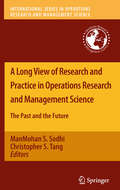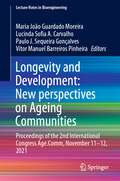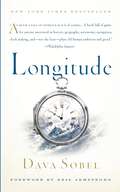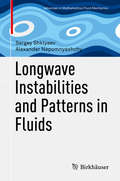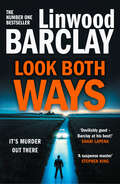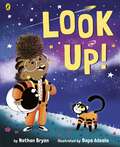- Table View
- List View
Long-Throated Flumes and Broad-Crested Weirs
by M.G. BosIn the context of water management, structures that measure the flow rate in open channels are used for a variety of purposes: (i) In hydrology, they measure the discharge from catchments; (ii) In irrigation, they measure and control the distribution of water at canal bifurcations and at off-take structures; (iii) In sanitary engineering, they measure the flow from urban areas and industries into the drainage system; (iv) In both irrigation and drainage, they can control the upstream water at a desired level. This thesis represents an attempt to place such flow measurements on a solid foundation by explaining the theory of water flow through 'long-throated flumes' and their hydraulically related 'broad-crested weirs'. On the basis of this theory, and on practical experience, these structures are recommended for use whenever the water surface in the channel at the measuring site can remain free. The thesis concludes with a design procedure that will facilitate the application of these structures. The idea to undertake research on discharge measurement structures was born upon my appointment as the first civil engineer with the International Institute for Land Reclamation and Improvement (ILRI). Because my recruiter, Ir. J.M. van Staveren, then Director of ILRI, had left the Institute before my arrival, and because I was the 'first of my kind' in an agricultural environment, I looked for contact and found - vii- support from: the late Prof. Ir. J. Nugteren, Prof. Ir.
A Long View of Research and Practice in Operations Research and Management Science: The Past and the Future (International Series in Operations Research & Management Science #148)
by ManMohan S. Sodhi Christopher S. TangFrom the Foreword by Marshall Fisher, The Wharton School, University of Pennsylvania: As generation of academics and practitioners follows generation, it is worthwhile to compile long views of the research and practice in the past to shed light on research and practice going forward. This collection of peer-reviewed articles is intended to provide such a long view. This book contains a collection of chapters written by leading scholars/practitioners who have continued their efforts in developing and/or implementing innovative OR/MS tools for solving real world problems. In this book, the contributors share their perspectives about the past, present and future of OR/MS theoretical development, solution tools, modeling approaches, and applications. Specifically, this book collects chapters that offer insights about the following topics: • Survey articles taking a long view over the past two or more decades to arrive at the present state of the art while outlining ideas for future research. Surveys focus on use of a particular OR/MS approach, e.g., mathematical programming (LP, MILP, etc.) and solution methods for particular family of application, e.g., distribution system design, distribution planning system, health care. • Autobiographical or biographical accounts of how particular inventions (e.g., Structured Modeling) were made. These could include personal experiences in early development of OR/MS and an overview of what has happened since. • Development of OR/MS mathematical tools (e.g., stochastic programming, optimization theory). • Development of OR/MS in a particular industry sector such as global supply chain management. • Modeling systems for OR/MS and their development over time as well as speculation on future development (e.g., LINDO, LINGO, and What’sBest!) • New applications of OR/MS models (e.g., happiness) The target audience of this book is young researchers, graduate/advanced undergraduate students from OR/MS and related fields like computer science, engineering, and management as well as practitioners who want to understand how OR/MS modeling came about over the past few decades and what research topics or modeling approaches they could pursue in research or application.
Longevity and Development: Proceedings of the 2nd International Congress Age.Comm, November 11–12, 2021 (Lecture Notes in Bioengineering)
by Maria João Guardado Moreira Lucinda Sofia A. Carvalho Paulo J. Sequeira Gonçalves Vítor Manuel Barreiros PinheiraThis book focuses on the dynamic process of aging and on interventions to support the development of older and integrated societies, from a multidisciplinary point of view. Gathering contributions from researchers and professionals with different backgrounds, including social and health sciences, education, engineering and IT, biology, geography and environmental science, it aims at understanding the phenomenon of population aging, in order to contribute to the development of future functional communities, fostering well-being and autonomy of the elderly, their integration and participation. Based on the proceedings of the 2nd International Congress Age.Comm Longevity and Development, organised online on November 11-12, 2021, from Castelo Branco, Portugal, this book addresses a wide range of specialists dealing with the process of aging, integration and community development in the societies of the future.
Longitude: The True Story of a Lone Genius Who Solved the Greatest Scientific Problem of His Time (The\literary Collection)
by Dava SobelThe dramatic human story of an epic scientific quest and of one man's forty-year obsession to find a solution to the thorniest scientific dilemma of the day--"the longitude problem."Anyone alive in the eighteenth century would have known that "the longitude problem" was the thorniest scientific dilemma of the day-and had been for centuries. Lacking the ability to measure their longitude, sailors throughout the great ages of exploration had been literally lost at sea as soon as they lost sight of land. Thousands of lives and the increasing fortunes of nations hung on a resolution. One man, John Harrison, in complete opposition to the scientific community, dared to imagine a mechanical solution-a clock that would keep precise time at sea, something no clock had ever been able to do on land. Longitude is the dramatic human story of an epic scientific quest and of Harrison's forty-year obsession with building his perfect timekeeper, known today as the chronometer. Full of heroism and chicanery, it is also a fascinating brief history of astronomy, navigation, and clockmaking, and opens a new window on our world.
The Longleaf Pine Ecosystem: Ecology, Silviculture, and Restoration (Springer Series on Environmental Management)
by Shibu Jose Eric J. Jokela Deborah L. MillerThis book unites a wealth of current information on the ecology, silviculture and restoration of the Longleaf Pine ecosystem. The book includes a discussion of the significant historical, social and political aspects of ecosystem management, making it a valuable resource for students, land managers, ecologists, private landowners, government agencies, consultants and the forest products industry.
Longwall Mining, 3rd Edition
by Syd S. PengIn the past 13 years since the publication of Longwall Mining, 2nd edition in 2006, although there have been no major changes in longwall mining technology and operations, many incremental developments in the whole system as well as various subsystems of the existing longwall mining operational technologies as detailed in the 2nd edition have been added to this edition. Major developments are automation, and health and safety technology, as well as equipment reliability, thereby greatly increasing productivity and cutting cost. In particular, the longwall system can now run automatically cut by cut forever without operators' intervention provided that the geology allows it. Other health and safety features such as LASC, personal proximity detection, color lighting, automatic shield water sprays and remote shearer control are fully operational. There are more than 7000 sensors installed in current longwall mining systems. The big data obtained and fast communication technology have been fully utilized to improve and solve operational problems in real time. Those features are fully documented in the new edition. In pursuit of high productivity and cutting cost, life cycle management that increases equipment reliability has been implemented by OEM. Automation improvement such as tail-end automatic chain tensioner greatly extends AFC chain's service life. Other incremental improvements including dust and methane controls, entry development, panel design and face move are addressed. Additional operational issues such as extension of panel width and compatibility test are also discussed. Since the last plow longwall mine was closed in 2018, the chapter on plow longwalling has been dropped and in its place Automation of Longwall Components and System is added. Also, a new chapter Longwall Top Coal Caving Mining (LTCC) is added due to its successful application in Australia since 2005. Longwall Mining, 3rd edition will be of interest to professionals and academics in the field of mining engineering specifically, serving both as a reference work and an (under)graduate textbook, but will also interest civil, geomechanical and geological engineers and rock mechanics professionals, as well as coal operators, mining consultants, researchers, equipment manufacturers, and government regulators.
Longwall Mining, 3rd Edition
by Syd S. PengIn the past 13 years since the publication of Longwall Mining, 2nd edition in 2006, although there have been no major changes in longwall mining technology and operations, many incremental developments in the whole system as well as various subsystems of the existing longwall mining operational technologies as detailed in the 2nd edition have been added to this edition. Major developments are automation, and health and safety technology, as well as equipment reliability, thereby greatly increasing productivity and cutting cost. In particular, the longwall system can now run automatically cut by cut forever without operators' intervention provided that the geology allows it. Other health and safety features such as LASC, personal proximity detection, color lighting, automatic shield water sprays and remote shearer control are fully operational. There are more than 7000 sensors installed in current longwall mining systems. The big data obtained and fast communication technology have been fully utilized to improve and solve operational problems in real time. Those features are fully documented in the new edition. In pursuit of high productivity and cutting cost, life cycle management that increases equipment reliability has been implemented by OEM. Automation improvement such as tail-end automatic chain tensioner greatly extends AFC chain's service life. Other incremental improvements including dust and methane controls, entry development, panel design and face move are addressed. Additional operational issues such as extension of panel width and compatibility test are also discussed. Since the last plow longwall mine was closed in 2018, the chapter on plow longwalling has been dropped and in its place Automation of Longwall Components and System is added. Also, a new chapter Longwall Top Coal Caving Mining (LTCC) is added due to its successful application in Australia since 2005. Longwall Mining, 3rd edition will be of interest to professionals and academics in the field of mining engineering specifically, serving both as a reference work and an (under)graduate textbook, but will also interest civil, geomechanical and geological engineers and rock mechanics professionals, as well as coal operators, mining consultants, researchers, equipment manufacturers, and government regulators.
Longwave Instabilities and Patterns in Fluids (Advances in Mathematical Fluid Mechanics)
by Sergey Shklyaev Alexander NepomnyashchyThis book summarizes the main advances in the field of nonlinear evolution and pattern formation caused by longwave instabilities in fluids. It will allow readers to master the multiscale asymptotic methods and become familiar with applications of these methods in a variety of physical problems. Longwave instabilities are inherent to a variety of systems in fluid dynamics, geophysics, electrodynamics, biophysics, and many others. The techniques of the derivation of longwave amplitude equations, as well as the analysis of numerous nonlinear equations, are discussed throughout. This book will be of value to researchers and graduate students in applied mathematics, physics, and engineering, in particular within the fields of fluid mechanics, heat and mass transfer theory, and nonlinear dynamics.
Lonsdale Essentials: Revision Guide (PDF)
by VariousWritten for 2009 curriculum change, Essentials provides concise coverage of all the externally assessed course content and skills for GCSE Electronic Products.
Look-Ahead Based Sigma-Delta Modulation (Analog Circuits and Signal Processing)
by Erwin Janssen Arthur van RoermundThe aim of this book is to expand and improve upon the existing knowledge on discrete-time 1-bit look-ahead sigma-delta modulation in general, and to come to a solution for the above mentioned specific issues arising from 1-bit sigma-delta modulation for SA-CD. In order to achieve this objective an analysis is made of the possibilities for improving the performance of digital noise-shaping look-ahead solutions. On the basis of the insights obtained from the analysis, several novel generic 1-bit look-ahead solutions that improve upon the state-of-the-art will be derived and their performance will be evaluated and compared. Finally, all the insights are combined with the knowledge of the SA-CD lossless data compression algorithm to come to a specifically for SA-CD optimized look-ahead design.
Look Both Ways
by Linwood BarclayJust because that car sees you doesn’t mean it’s safe to cross… From the international bestseller Linwood Barclay comes a new, action-packed, utterly gripping crime thriller!
Look Both Ways
by null Linwood BarclayThey think as one. They act as one. They kill as one. ‘Look Both Ways is devilishly good – exciting, thrilling – Barclay at his best!’ SHARI LAPENA, No. 1 internationally bestselling author The residents of Garrett Island are part of a ground-breaking experiment. For a month, their cars will be replaced by self-driving vehicles – voice-controlled, comfortable and safe. Single mum Sandra is prepping for the huge media event, and she’s ready for a driverless future. Widowed after her husband fell asleep at the wheel, she’s relieved that her kids may never need to drive themselves. But as the day gets underway, disaster strikes. A journalist vanishes, possibly murdered. And before long, it’s clear something is very wrong. The cars are no longer taking orders from their passengers. They’re starting to organise. They’re starting to hunt. And they’ve got the residents of Garrett Island in their sights. From the Sunday Times Number One bestseller Linwood Barclay comes a breakneck new thriller, Look Both Ways. PRAISE FOR LOOK BOTH WAYS: ‘Look Both Ways is devilishly good – exciting, thrilling – Barclay at his best!’ SHARI LAPENA ‘If “Jurassic Park but with autonomous automobiles” sounds like a very cool concept, that’s because it is’ FINANCIAL TIMES PRAISE FOR LINWOOD BARCLAY: ‘A… rich blend of smart social comedy, tense perilous scenes and loathsome villainy’ SUNDAY TIMES ‘The twists keep coming’ THE TIMES ‘Barclay is a terrific writer … I couldn’t put it down, and you won’t be able to either. If you enjoy thrillers, this is the real deal. It never lets up’ STEPHEN KING ‘Stunning’ JEFFERY DEAVER ‘A full-throttle powerhouse of a thriller – Linwood Barclay is in a class of his own’ T.M. LOGAN ‘Linwood Barclay is a stone-cold pro’ JOE HILL ‘A rip-roaring rollercoaster of a ride’ DAILY MAIL ‘Linwood Barclay presses all the right buttons’ MICHAEL ROBOTHAM ‘One of the finest thriller writers in the world at the very top of his game’ MARK BILLINGHAM
Look Up!
by Nathan Bryon3 ... 2 ... 1 ... LIFT OFF. Let science-mad chatterbox Rocket launch into your hearts in this inspiring picture book from two incredible debut talents.Rocket's going to be the greatest astronaut, star-catcher, space-traveller that has ever lived!But...First, she needs to convince her big brother Jamal to stop looking down at his phone and start LOOKING UP at the stars.----Bursting with energy and passion about space and the natural world, this heart-warming picture book will reignite your desire to turn off those screens and switch on to the outside world.
Looking Ahead: Human Factors Challenges in A Changing World
by Raymond S. NickersonThis volume aims to review some of the recent developments and trends that seem especially relevant to any attempt to understand near-term-future possibilities; to consider what a variety of knowledgeable people are saying about changes and developments that could occur; and to relate the possibilities to needs and opportunities for human factors research. Human factors, in this case, includes not only the implications of human capabilities and limitations for the design of equipment and machines intended for human use, but also applied psychology in a more general sense. In particular, it is taken to involve social systems as well as physical ones, the interaction of people with the environment as well as with machines, the facilitation of communication between people as well as between people and computers, and the design of policies and procedures as well as the design of equipment. The author's intention is to focus on anticipated problems -- including opportunities as well as difficulties -- and ask how human factors research might contribute to solutions. It is assumed that there are ways in which such research could be useful in addressing societal problems that the profession has not yet realized and that these are more likely to be recognized in the future if the community is actively seeking to identify them.
Looking Ahead: Human Factors Challenges in A Changing World
by Raymond S. NickersonThis volume aims to review some of the recent developments and trends that seem especially relevant to any attempt to understand near-term-future possibilities; to consider what a variety of knowledgeable people are saying about changes and developments that could occur; and to relate the possibilities to needs and opportunities for human factors research. Human factors, in this case, includes not only the implications of human capabilities and limitations for the design of equipment and machines intended for human use, but also applied psychology in a more general sense. In particular, it is taken to involve social systems as well as physical ones, the interaction of people with the environment as well as with machines, the facilitation of communication between people as well as between people and computers, and the design of policies and procedures as well as the design of equipment. The author's intention is to focus on anticipated problems -- including opportunities as well as difficulties -- and ask how human factors research might contribute to solutions. It is assumed that there are ways in which such research could be useful in addressing societal problems that the profession has not yet realized and that these are more likely to be recognized in the future if the community is actively seeking to identify them.
Looking Beyond the Runway: Airlines Innovating with Best Practices while Facing Realities
by Nawal K. TanejaThe global airline industry, facing significant changes and discontinuity is prompted and forced to deal with a "new normal." Who would have imagined a few years ago that: - a significant percentage of consumers in the US now prefer to fly low-cost airlines instead of full-service airlines because they perceive the product to be better, - airlines would generate up to a third of their total income from non-ticket revenue, - many low-cost airlines would add complexity to their original simple business models through the development of code-share agreements, the use of global distribution systems, and travel agents to distribute their seats, - Jetstar, a low-cost subsidiary of Qantas, would grow faster and be more profitable than its parent, - a survey carried out by Ryanair would show that 42 percent of passengers would be willing to stand on short (one hour) flights if they could pay 50 percent less than seated passengers, - passengers could pay as little as US$2,000 for a transatlantic Business Class ticket on top-brand airlines, - Lufthansa would have ownership in airlines based in Austria, Belgium, Italy, Switzerland, Turkey, the UK, and the US, and that it would continue to pursue equity ownership in airlines based in Poland and Scandinavia, or - the Japanese and Canadian governments would struggle to find different ways to bail out their heretofore flag carriers? To deal with this upcoming "new normal", airlines have to go beyond their short-term circumstantial strategies - they need strategic renewal of their ageing business model. In this candidly-written book, Nawal Taneja explains what will separate the winners from the losers. He maintains the leaders will be the airlines that: (1) exploit this crisis-driven change to their best advantage, (2) learn to work around the airline-inherent constraints that prevent them from running their businesses just like other businesses, (3) learn from successes and failures of other global enterprises, (4) sharpen their business intelligence, analytics, and strategic agility, and (5) proactively explore the "pockets of growth" in this emerging-markets century. To help airline executives become informed of new competitive games, the author analyzes numerous business sectors such as auto, hospitality, retail, technology, and entertainment. For example, relevant lessons can be learned from the strategic mistakes made by the US automakers. Likewise, emergent and compelling insights can be gained in superior customer experience from Ritz Carlton and Zappos, and in value-creating innovation from Cirque du Soleil and Zipcar. The book also features a multitiude of forewords from airlines and related businesses to provide readers with multiple perspectives on the changing landscape in the global airline industry. Nawal Taneja is a career analyst of the global airline industry with wide-ranging experience in the aviation industry, academia, and public policy. Encouraged by industry executives, he has written five other books for practitioners in the global airline industry, including FASTEN YOUR SEATBELT: The Passenger is Flying the Plane and Flying Ahead of the Airplane.
Looking Beyond the Runway: Airlines Innovating with Best Practices while Facing Realities
by Nawal K. TanejaThe global airline industry, facing significant changes and discontinuity is prompted and forced to deal with a "new normal." Who would have imagined a few years ago that: - a significant percentage of consumers in the US now prefer to fly low-cost airlines instead of full-service airlines because they perceive the product to be better, - airlines would generate up to a third of their total income from non-ticket revenue, - many low-cost airlines would add complexity to their original simple business models through the development of code-share agreements, the use of global distribution systems, and travel agents to distribute their seats, - Jetstar, a low-cost subsidiary of Qantas, would grow faster and be more profitable than its parent, - a survey carried out by Ryanair would show that 42 percent of passengers would be willing to stand on short (one hour) flights if they could pay 50 percent less than seated passengers, - passengers could pay as little as US$2,000 for a transatlantic Business Class ticket on top-brand airlines, - Lufthansa would have ownership in airlines based in Austria, Belgium, Italy, Switzerland, Turkey, the UK, and the US, and that it would continue to pursue equity ownership in airlines based in Poland and Scandinavia, or - the Japanese and Canadian governments would struggle to find different ways to bail out their heretofore flag carriers? To deal with this upcoming "new normal", airlines have to go beyond their short-term circumstantial strategies - they need strategic renewal of their ageing business model. In this candidly-written book, Nawal Taneja explains what will separate the winners from the losers. He maintains the leaders will be the airlines that: (1) exploit this crisis-driven change to their best advantage, (2) learn to work around the airline-inherent constraints that prevent them from running their businesses just like other businesses, (3) learn from successes and failures of other global enterprises, (4) sharpen their business intelligence, analytics, and strategic agility, and (5) proactively explore the "pockets of growth" in this emerging-markets century. To help airline executives become informed of new competitive games, the author analyzes numerous business sectors such as auto, hospitality, retail, technology, and entertainment. For example, relevant lessons can be learned from the strategic mistakes made by the US automakers. Likewise, emergent and compelling insights can be gained in superior customer experience from Ritz Carlton and Zappos, and in value-creating innovation from Cirque du Soleil and Zipcar. The book also features a multitiude of forewords from airlines and related businesses to provide readers with multiple perspectives on the changing landscape in the global airline industry. Nawal Taneja is a career analyst of the global airline industry with wide-ranging experience in the aviation industry, academia, and public policy. Encouraged by industry executives, he has written five other books for practitioners in the global airline industry, including FASTEN YOUR SEATBELT: The Passenger is Flying the Plane and Flying Ahead of the Airplane.
Looking for Insight, Transformation, and Learning in Online Talk
by Trena M. Paulus Alyssa Friend WiseLooking for Insight, Transformation, and Learning in Online Talk is a comprehensive guide to analyzing digital interaction in formal and informal online spaces. The book establishes a new research framework for addressing major challenges that have arisen as social exchanges, meaning-making, and knowledge-building increasingly take place in social media, discussion forums, and online communities. With a focus on methodological alignment to support valid and trustworthy knowledge claims, the authors present a series of design decisions to help researchers: frame their object of interest and unpack underlying assumptions understand key differences between researcher-influenced and pre-existing online talk ethically extract and organize data for analysis apply rigorous qualitative, quantitative, and computational methods to answer their research questions Written for scholars in education, business, communication, media studies, health sciences, political sciences, and beyond, this is a thorough approach to the research methods and concerns essential to the study of talk in online contexts.
Looking for Insight, Transformation, and Learning in Online Talk
by Trena M. Paulus Alyssa Friend WiseLooking for Insight, Transformation, and Learning in Online Talk is a comprehensive guide to analyzing digital interaction in formal and informal online spaces. The book establishes a new research framework for addressing major challenges that have arisen as social exchanges, meaning-making, and knowledge-building increasingly take place in social media, discussion forums, and online communities. With a focus on methodological alignment to support valid and trustworthy knowledge claims, the authors present a series of design decisions to help researchers: frame their object of interest and unpack underlying assumptions understand key differences between researcher-influenced and pre-existing online talk ethically extract and organize data for analysis apply rigorous qualitative, quantitative, and computational methods to answer their research questions Written for scholars in education, business, communication, media studies, health sciences, political sciences, and beyond, this is a thorough approach to the research methods and concerns essential to the study of talk in online contexts.
Looking Forward: Prediction and Uncertainty in Modern America
by Jamie L. PietruskaIn the decades after the Civil War, the world experienced monumental changes in industry, trade, and governance. As Americans faced this uncertain future, public debate sprang up over the accuracy and value of predictions, asking whether it was possible to look into the future with any degree of certainty. In Looking Forward, Jamie L. Pietruska uncovers a culture of prediction in the modern era, where forecasts became commonplace as crop forecasters, “weather prophets,” business forecasters, utopian novelists, and fortune-tellers produced and sold their visions of the future. Private and government forecasters competed for authority—as well as for an audience—and a single prediction could make or break a forecaster’s reputation. Pietruska argues that this late nineteenth-century quest for future certainty had an especially ironic consequence: it led Americans to accept uncertainty as an inescapable part of both forecasting and twentieth-century economic and cultural life. Drawing together histories of science, technology, capitalism, environment, and culture, Looking Forward explores how forecasts functioned as new forms of knowledge and risk management tools that sometimes mitigated, but at other times exacerbated, the very uncertainties they were designed to conquer. Ultimately Pietruska shows how Americans came to understand the future itself as predictable, yet still uncertain.
Looking Forward: Prediction and Uncertainty in Modern America
by Jamie L. PietruskaIn the decades after the Civil War, the world experienced monumental changes in industry, trade, and governance. As Americans faced this uncertain future, public debate sprang up over the accuracy and value of predictions, asking whether it was possible to look into the future with any degree of certainty. In Looking Forward, Jamie L. Pietruska uncovers a culture of prediction in the modern era, where forecasts became commonplace as crop forecasters, “weather prophets,” business forecasters, utopian novelists, and fortune-tellers produced and sold their visions of the future. Private and government forecasters competed for authority—as well as for an audience—and a single prediction could make or break a forecaster’s reputation. Pietruska argues that this late nineteenth-century quest for future certainty had an especially ironic consequence: it led Americans to accept uncertainty as an inescapable part of both forecasting and twentieth-century economic and cultural life. Drawing together histories of science, technology, capitalism, environment, and culture, Looking Forward explores how forecasts functioned as new forms of knowledge and risk management tools that sometimes mitigated, but at other times exacerbated, the very uncertainties they were designed to conquer. Ultimately Pietruska shows how Americans came to understand the future itself as predictable, yet still uncertain.
Looking Forward: Prediction and Uncertainty in Modern America
by Jamie L. PietruskaIn the decades after the Civil War, the world experienced monumental changes in industry, trade, and governance. As Americans faced this uncertain future, public debate sprang up over the accuracy and value of predictions, asking whether it was possible to look into the future with any degree of certainty. In Looking Forward, Jamie L. Pietruska uncovers a culture of prediction in the modern era, where forecasts became commonplace as crop forecasters, “weather prophets,” business forecasters, utopian novelists, and fortune-tellers produced and sold their visions of the future. Private and government forecasters competed for authority—as well as for an audience—and a single prediction could make or break a forecaster’s reputation. Pietruska argues that this late nineteenth-century quest for future certainty had an especially ironic consequence: it led Americans to accept uncertainty as an inescapable part of both forecasting and twentieth-century economic and cultural life. Drawing together histories of science, technology, capitalism, environment, and culture, Looking Forward explores how forecasts functioned as new forms of knowledge and risk management tools that sometimes mitigated, but at other times exacerbated, the very uncertainties they were designed to conquer. Ultimately Pietruska shows how Americans came to understand the future itself as predictable, yet still uncertain.
Looking Forward: Prediction and Uncertainty in Modern America
by Jamie L. PietruskaIn the decades after the Civil War, the world experienced monumental changes in industry, trade, and governance. As Americans faced this uncertain future, public debate sprang up over the accuracy and value of predictions, asking whether it was possible to look into the future with any degree of certainty. In Looking Forward, Jamie L. Pietruska uncovers a culture of prediction in the modern era, where forecasts became commonplace as crop forecasters, “weather prophets,” business forecasters, utopian novelists, and fortune-tellers produced and sold their visions of the future. Private and government forecasters competed for authority—as well as for an audience—and a single prediction could make or break a forecaster’s reputation. Pietruska argues that this late nineteenth-century quest for future certainty had an especially ironic consequence: it led Americans to accept uncertainty as an inescapable part of both forecasting and twentieth-century economic and cultural life. Drawing together histories of science, technology, capitalism, environment, and culture, Looking Forward explores how forecasts functioned as new forms of knowledge and risk management tools that sometimes mitigated, but at other times exacerbated, the very uncertainties they were designed to conquer. Ultimately Pietruska shows how Americans came to understand the future itself as predictable, yet still uncertain.
Loop-shaping Robust Control (Iste Ser.)
by Philippe FeyelThe loop-shaping approach consists of obtaining a specification in relation to the open loop of the control from specifications regarding various closed loop transfers, because it is easier to work on a single transfer (in addition to the open loop) than on a multitude of transfers (various loopings such as set point/error, disturbance/error, disturbance/control, etc.). The simplicity and flexibility of the approach make it very well adapted to the industrial context. This book presents the loop-shaping approach in its entirety, starting with the declension of high-level specifications into a loop-shaping specification. It then shows how it is possible to fully integrate this approach for the calculation of robust and efficient correctors with the help of existing techniques, which have already been industrially tried and tested, such as H-infinity synthesis. The concept of a gap metric (or distance between models) is also presented along with its connection with the prime factors of a set of systems shaping a ball of models, as well as its connections with robust synthesis by loop-shaping, in order to calculate efficient and robust correctors. As H-infinity loop-shaping is often demanding in terms of the order of correctors, the author also looks at loop-shaping synthesis under an ordering constraint. Two further promising lines of research are presented, one using stochastic optimization, and the other non-smooth optimization. Finally, the book introduces the concept of correction with two degrees of freedom via the formalism of prime factorization. Avenues for future work are also opened up by the author as he discusses the main drawbacks to loop-shaping synthesis, and how these issues can be solved using modern optimization techniques in an increasingly competitive industrial context, in accordance with ever more complex sets of functional specifications, associated with increasingly broad conditions of usage. Contents Introduction 1. The Loop-shaping Approach 2. Loop-shaping H-infinity Synthesis 3. Two Degrees-of-Freedom Controllers 4. Extensions and Optimizations Appendix 1. Demonstrative Elements on the Optimization of Robust Stabilization with Order Constraint Appendix 2. Establishment of Real LMIs for the Quasi-Convex Problem of Optimization of the Weighting Functions About the Authors Philippe Feyel is an R&D Engineer for the high-tech company Sagem Défense Sécurité, part of the defence and security business of the SAFRAN group, in Paris, France.
Loop-shaping Robust Control
by Philippe FeyelThe loop-shaping approach consists of obtaining a specification in relation to the open loop of the control from specifications regarding various closed loop transfers, because it is easier to work on a single transfer (in addition to the open loop) than on a multitude of transfers (various loopings such as set point/error, disturbance/error, disturbance/control, etc.). The simplicity and flexibility of the approach make it very well adapted to the industrial context. This book presents the loop-shaping approach in its entirety, starting with the declension of high-level specifications into a loop-shaping specification. It then shows how it is possible to fully integrate this approach for the calculation of robust and efficient correctors with the help of existing techniques, which have already been industrially tried and tested, such as H-infinity synthesis. The concept of a gap metric (or distance between models) is also presented along with its connection with the prime factors of a set of systems shaping a ball of models, as well as its connections with robust synthesis by loop-shaping, in order to calculate efficient and robust correctors. As H-infinity loop-shaping is often demanding in terms of the order of correctors, the author also looks at loop-shaping synthesis under an ordering constraint. Two further promising lines of research are presented, one using stochastic optimization, and the other non-smooth optimization. Finally, the book introduces the concept of correction with two degrees of freedom via the formalism of prime factorization. Avenues for future work are also opened up by the author as he discusses the main drawbacks to loop-shaping synthesis, and how these issues can be solved using modern optimization techniques in an increasingly competitive industrial context, in accordance with ever more complex sets of functional specifications, associated with increasingly broad conditions of usage. Contents Introduction 1. The Loop-shaping Approach 2. Loop-shaping H-infinity Synthesis 3. Two Degrees-of-Freedom Controllers 4. Extensions and Optimizations Appendix 1. Demonstrative Elements on the Optimization of Robust Stabilization with Order Constraint Appendix 2. Establishment of Real LMIs for the Quasi-Convex Problem of Optimization of the Weighting Functions About the Authors Philippe Feyel is an R&D Engineer for the high-tech company Sagem Défense Sécurité, part of the defence and security business of the SAFRAN group, in Paris, France.

